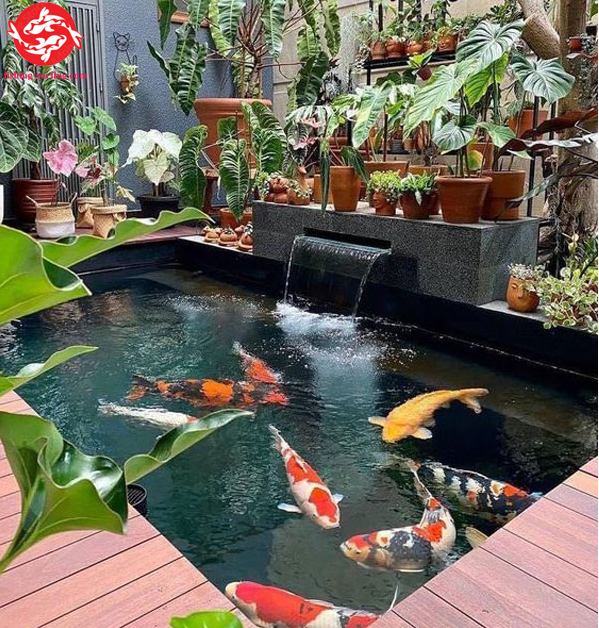Creating a captivating koi fish tank setup is not just about aesthetics; it’s about providing a thriving environment for your aquatic companions. Koi fish are renowned for their beauty and vibrant colors, but they also require careful planning and consideration to flourish in captivity. In this article, we will explore the essential aspects of koi fish tank setup, from selecting the right tank size to choosing the appropriate filtration system, ensuring that you create an enchanting habitat for these mesmerizing creatures.
Understanding Koi Fish Needs
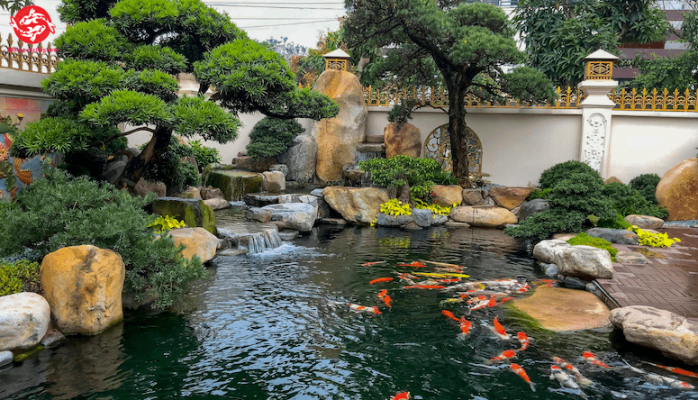
Before diving into the specifics of setting up your koi fish tank, it’s crucial to understand the unique needs of these beautiful fish. Koi are not only stunning but also have specific environmental requirements that must be met to ensure their health and longevity.
The Importance of Space
Koi fish are known for their large size and need ample swimming space. A common misconception is that koi can thrive in small aquariums. In reality, an adequately sized tank is fundamental for their development and overall well-being.
Koi can grow significantly over time, often reaching lengths of 24 inches or more. Therefore, a larger tank is necessary to accommodate their growth. A general rule of thumb is to allow at least 250 gallons of water per koi, which provides them with enough room to swim freely and reduces stress levels.
Additionally, a spacious environment promotes healthy behaviors. Koi enjoy social interactions with one another, so having multiple fish allows for natural behavior patterns such as schooling and exploring. This interaction contributes positively to their mental health.
Water Quality and Parameters
Maintaining optimal water quality is critical for koi fish, as they are sensitive to changes in their environment. You must regularly monitor parameters such as pH, ammonia levels, nitrite, and nitrate concentrations.
- pH Levels: Koi prefer a slightly alkaline environment with a pH range of 7.0 to 8.6. Regularly testing and adjusting the pH is essential to prevent any health issues.
- Ammonia and Nitrites: Both of these compounds can be toxic to koi. Keeping ammonia levels at zero and nitrite levels below 0.25 ppm is crucial.
- Nitrates: While less harmful, nitrates should be kept below 40 ppm through regular water changes and proper filtration.
Good water quality supports healthy koi, reduces the risk of disease, and enhances the overall aesthetic of your koi fish tank setup.
Temperature Regulation
Koi fish thrive in a temperature range between 65°F to 75°F. It’s vital to monitor the water temperature regularly using an aquarium thermometer and make adjustments as necessary.
Using heaters or chillers can help maintain a stable temperature, especially during seasonal changes. Fluctuations in temperature can lead to stress and illness in koi.
Implementing a thermostat control can be an effective way to ensure that water remains within the desired temperature range while making your koi fish tank setup more efficient.
Choosing the Right Tank and Equipment
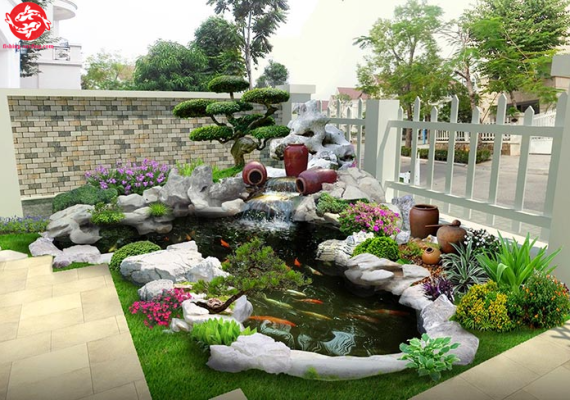
The process of establishing a successful koi fish tank setup begins with selecting the right equipment and tank.
Selecting the Perfect Tank Size
As mentioned earlier, the size of your tank plays a pivotal role in the health of your koi.
When deciding on a tank, consider both the current and potential future size of your koi fish. A tank that is too small can restrict their movement, leading to increased stress and susceptibility to diseases.
If you’re starting with smaller koi, consider a larger tank now to avoid needing to upgrade later. A well-planned tank encourages a better living environment for the koi and enriches your overall experience as an aquarium enthusiast.
Filtration Systems
A high-quality filtration system is essential for maintaining clarity and cleanliness in your koi fish tank setup.
Choosing a filtration system that meets the needs of your tank’s size is paramount. Here are some types of filters to consider:
- Mechanical Filters: These remove physical debris from the water, helping to keep it clear and clean.
- Biological Filters: They promote beneficial bacteria that break down harmful toxins like ammonia and nitrites.
- Chemical Filters: These utilize activated carbon to remove impurities and odors from the water.
An integrated filtration system can assist in achieving optimal water quality, which is vital for creating a healthy environment for your koi.
Aeration and Water Movement
Koi thrive in well-oxygenated water, making aeration an important aspect of your tank setup. Proper aeration ensures that oxygen levels remain adequate, preventing stress and enhancing fish activity.
Adding air stones or diffusers can enhance oxygen levels in the water. Additionally, installing water pumps can create gentle water movement, mimicking natural pond environments.
This movement contributes to waste dispersal and promotes even temperature distribution throughout the tank.
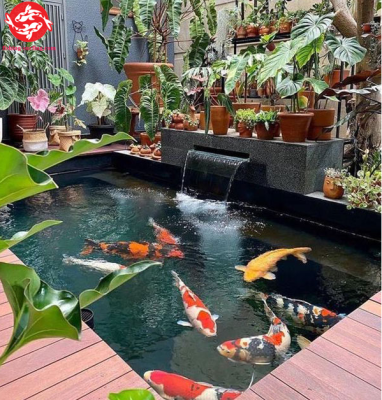
Decorating Your Koi Tank
While the primary focus of a koi fish tank setup is to create a healthy environment, aesthetics shouldn’t be overlooked. Beautiful decorations can enhance the visual appeal of your setup while offering hiding spots for your koi.
Natural Versus Artificial Decorations
When considering decorations, you can choose between natural and artificial options. Each has its benefits and drawbacks.
Natural decorations, such as rocks, driftwood, and aquatic plants, provide a more authentic feel reminiscent of a koi pond. They also offer shelter and play areas for your fish. However, maintaining these items can require more effort, as they often need cleaning and replacing over time.
On the other hand, artificial decorations are easier to maintain and can be found in various colors and styles. Look for high-quality materials that won’t leach chemicals into the water.
Plant Choices
Aquatic plants can serve multiple purposes in your koi tank. Not only do they enhance the beauty of your setup, but they also improve water quality by absorbing excess nutrients and providing shade.
When selecting plants, focus on hardy species that can withstand the nibbling of koi. Some popular choices include:
- Water Lilies: These float on the surface and provide excellent shade while adding elegance to your tank.
- Hornwort: This submerged plant is resilient and offers cover for smaller fish and fry.
- Pondweed: Known for their hardiness, these plants can thrive in various conditions.
Creating Hiding Spots
Providing hiding spots is essential for reducing stress in koi. Items like decorative caves, rock formations, or even PVC pipes can create safe spaces for your fish. Koi may occasionally need refuge, especially during feeding times or if they feel threatened.
Creating a balanced design with open spaces for swimming and strategically placed hiding spots fosters a comfortable atmosphere conducive to the flourishing of your koi.
Maintenance and Care of Your Koi Fish Tank
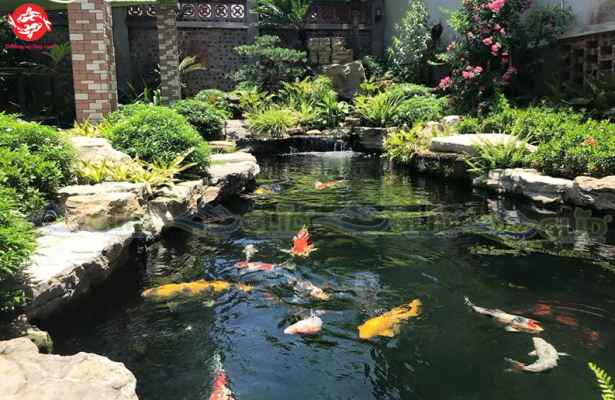
Even the best koi fish tank setup requires ongoing care and maintenance. Establishing routines for cleaning, monitoring water parameters, and caring for your koi will help ensure a thriving environment.
Regular Cleaning Routines
A clean tank is vital for the health of your koi. Establishing a routine cleaning schedule helps maintain water quality.
- Daily Tasks: Check for uneaten food, inspect fish for signs of stress or disease, and monitor water temperature.
- Weekly Tasks: Change a portion of the water (about 10-20%), clean the filter media, and test water parameters.
- Monthly Tasks: Inspect the tank’s equipment, clean decorations if needed, and replace any worn parts.
Regular maintenance prevents the buildup of harmful substances in the water and keeps your koi happy and healthy.
Monitoring Fish Health
Being vigilant about the health of your koi is crucial.
Observe your fish daily for any signs of illness or distress, such as changes in coloration, unusual swimming patterns, or lesions. Early detection of health issues can make treatment much simpler.
You might consider keeping a journal documenting the health of each fish, including any observations you make during daily checks. Detailed records can be invaluable if you ever notice concerning trends or seek advice from professionals.
Feeding Practices
Proper nutrition is key to keeping your koi in peak condition. Koi are omnivorous and require a balanced diet to support their growth, colors, and immune systems.
Feed your koi a high-quality commercial diet designed specifically for koi fish, supplemented with fresh vegetables or fruits as treats.
Be mindful not to overfeed, as excess food can contribute to poor water quality. Providing smaller portions multiple times a day rather than one large feeding helps mimic their natural feeding behaviors.
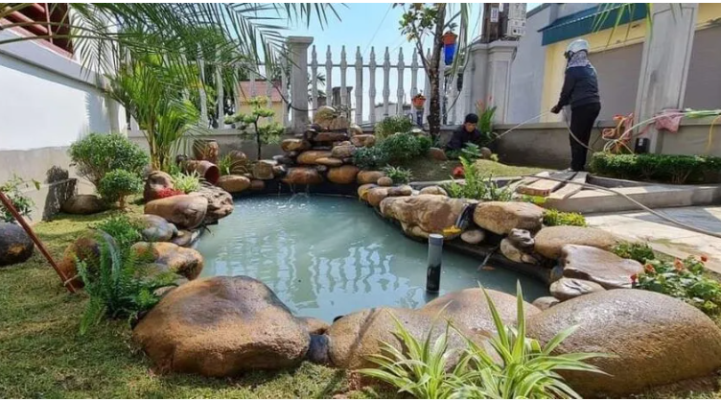
FAQs
What is the minimum tank size for koi fish?
Koi fish require a minimum of 250 gallons of water per fish to thrive. A larger tank will accommodate their growth and reduce stress.
How often should I change the water in my koi tank?
It is advisable to change about 10-20% of the water weekly to maintain optimal water quality and remove toxins.
Can koi live with other fish species?
Koi can be kept with other robust fish species, but avoiding small or delicate fish is recommended, as koi may accidentally harm them while swimming or feeding.
What should I feed my koi fish?
A balanced diet consisting of high-quality koi pellets, supplemented with vegetables and occasional treats, ensures optimal growth and health.
How can I tell if my koi fish is sick?
Signs of illness in koi fish may include faded colors, abnormal swimming patterns, loss of appetite, or visible lesions. Observe your fish carefully and consult with a veterinarian if you notice any concerns.
Conclusion
Setting up a koi fish tank is an enriching experience that combines creativity, technical knowledge, and a deep appreciation for nature. By understanding the unique needs of koi and implementing the right strategies for their care, you create a stunning environment that showcases their beauty while ensuring their health and happiness.
Whether you’re a seasoned aquarist or a beginner, embracing the intricacies of koi fish tank setup can lead to a rewarding journey filled with learning and enjoyment. Remember, a thoughtfully curated koi environment reflects not only the vitality of your fish but also the investment of passion and care you put into their world.


